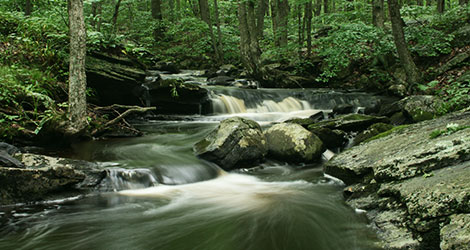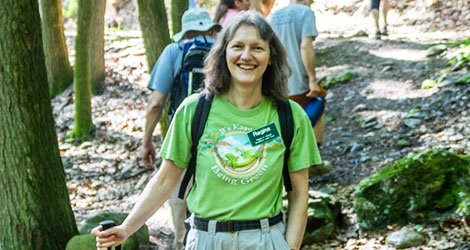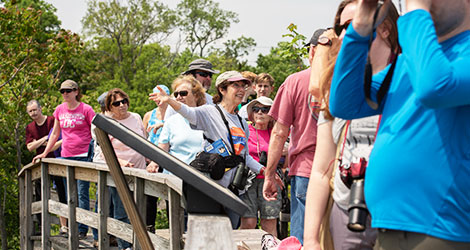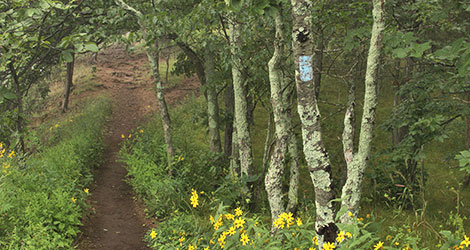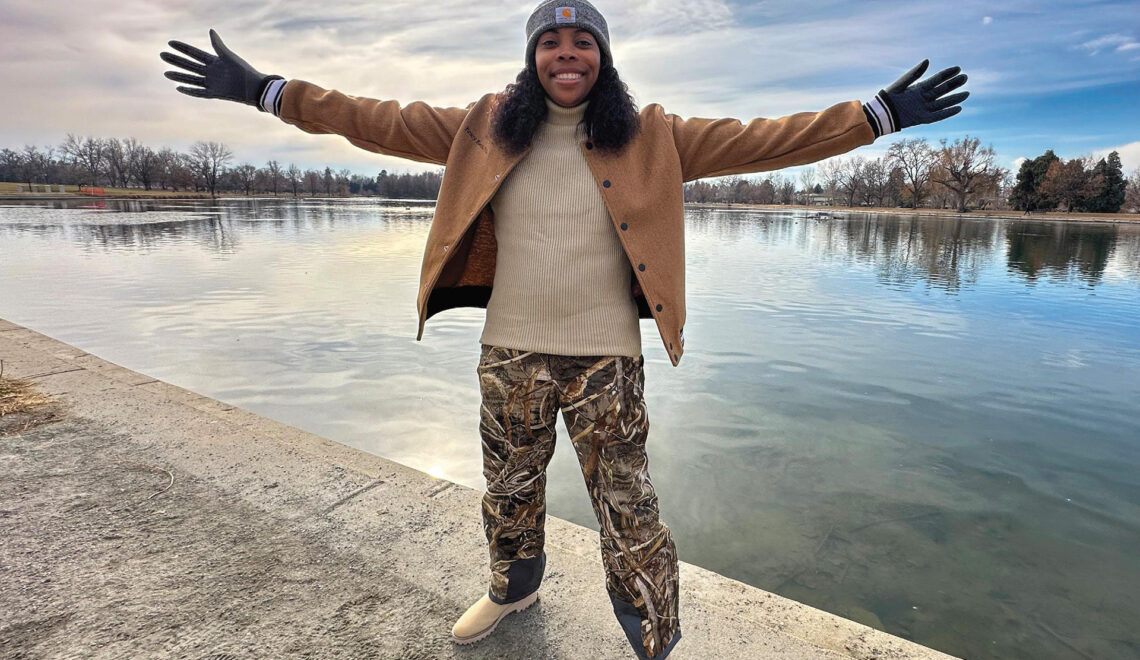
A Plan for Everyone
The state’s latest outdoor recreation plan is directed by someone who knows how it feels to be an outsider in the outdoors and is working hard to create a space where everyone belongs.
By Timothy Brown
Connecticut may the third smallest state by area but is home to a wide range of outdoors recreation opportunities, from hiking and mountain biking, to fishing, camping, and boating. In addition, New England’s distinctive and dramatic seasons provide recreationalists with year-round adventure. Itching to get on some skis? Winter is coming. Tired of the cold and snow? Book your campsite now because spring is right around the corner.
But experts say that not enough people know about these opportunities, and only a fraction of the state’s diverse communities are accessing parks, forests, beaches, and other natural settings to recreate.
The Statewide Comprehensive Outdoor Recreation Plan, or SCORP, is both a landscape-scale analysis and a blueprint for understanding who is—and, critically, who is not—recreating outdoors so that resources can best be allocated to serve all constituents. The SCORP is a requirement for states to receive funding through the Land and Water Conservation Fund, a federal program that supports the acquisition and development of park and recreation lands.
In 2023, the Connecticut Department of Energy and Environmental Protection (DEEP), the agency tasked with drafting the SCORP, partnered with the Center for Community Engagement and Social Research at Central Connecticut State University to conduct a variety of surveys—the Avid Outdoors Enthusiast Survey; the Statewide Demand Survey; and the Town’s Survey—in an effort to be more inclusive when developing the latest version of the five-year plan, which goes into effect in 2024.
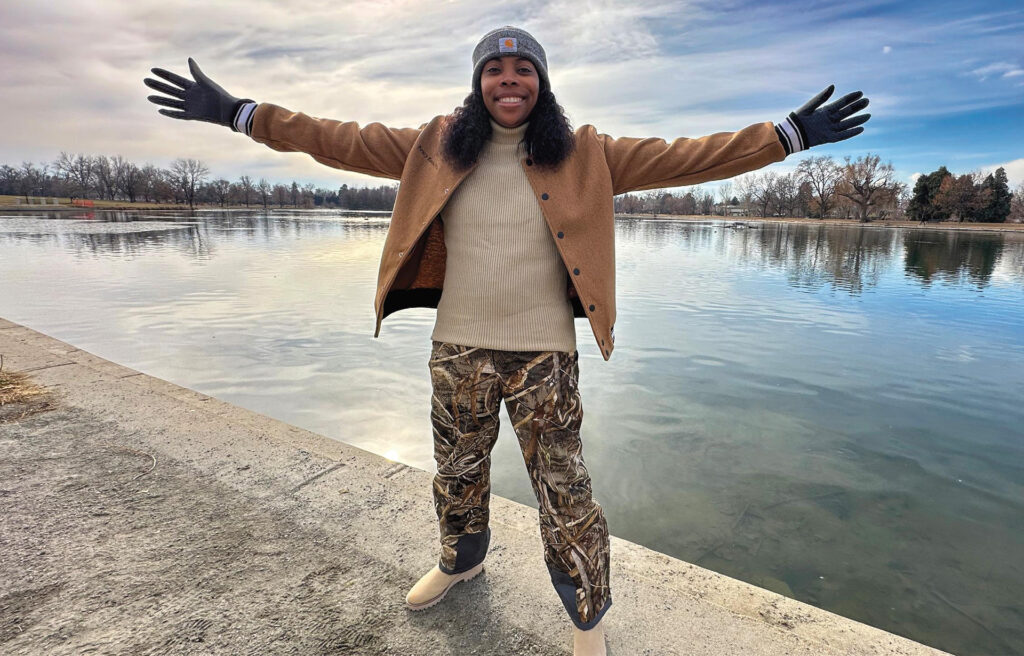
Dr. Akiebia Hicks is overseeing the development of the new SCORP. She says that while previous plans have focused on DEEP’s role in outdoor recreation, the goals, objectives, and strategies outlined in the current plan will be more relevant to municipalities, nonprofit organizations, and other partners in the state.
“When I came into this role, my biggest goal was to ensure that this wasn’t just a document that sat on the shelves and collected dust,” she said. “I wanted anybody in the state of Connecticut to be able to pick up this document and say, ‘This is how this applies to me.’”
Demand for outdoor recreation has risen dramatically since the pandemic. In 2022, an estimated 17 million people visited Connecticut’s state parks and forests, a 75 percent jump from pre-pandemic levels. This rapid increase in use has taken a toll on recreational facilities and placed additional demands on the workers who manage them. Using the surveys, DEEP has identified several areas for improvement. For example, the SCORP outlines strategies for enhancing the visitor experience, such as ensuring visitor safety, repairing and replacing infrastructure, improving the cleanliness of bathrooms and other facilities, and monitoring unlawful and forbidden activities. It also outlines opportunities to implement new volunteer programs, including serving as ambassadors to the public, so that DEEP, which is short-staffed and struggling to keep up with skyrocketing demand, can focus on other priorities.
The statewide surveys, which were conducted in English, Spanish, and Mandarin, didn’t only reveal how folks are using parks and forests, but also identified some of the barriers to outdoor recreation in Connecticut. “We wanted to know what user groups are in the most need,” Hicks said. “What can we do serve the greatest populations?”
Previous SCORPs pointed to a lack of transportation as a serious barrier to outdoors recreation. In response, DEEP created the Park Connect program to shuttle folks from cities to state beaches such as Hammonassett or Sherwood Island during the summer. But this time, a lack of awareness was one of the key barriers identified in the surveys.
“Connecticut is a beautiful state with many opportunities for recreation, but certain communities aren’t aware of what we have to offer in state parks,” said Hicks. “How can we communicate that more to a broader community?”
In addition to surveying folks inside state parks and forests, DEEP also surveyed individuals outside of those spaces. Surveys conducted outside of state parks and forests reflected Connecticut’s rich racial and ethnic diversity, but that diversity wasn’t represented inside the parks. Hicks says it was an “a-ha” moment for the agency.
“We found that most people from those demographics, they’re recreating, they’re just not coming to state parks and forests. Maybe they’re going to their municipal parks and recreation centers that are closer to their homes,” she said.
Personal safety and accessibility issues were other barriers identified in the Statewide Demand Survey. For example, a lack of accessible trails can prevent individuals who use wheelchairs from recreating. In response, DEEP is planning to deploy all-terrain wheelchairs in 10 parks throughout the state.
Hicks is using the data to better understand the barriers to outdoor recreation and to curate statewide goals associated with the plan. Goals range from improving equity and sustainable access, particularly for underserved populations, to safeguarding natural resources in the face of increase recreational use, to climate change, which is also an agency-wide initiative.
She has also worked with the SCORP Advisory Committee, a diverse group of recreationalists from across Connecticut, to ensure mutual support for the plan. All committee members were able to review the draft surveys and provide feedback before they were finalized. Hicks says she’s committed to continuing to meet with the advisory committee and external partners, including CFPA, after the plan is published to ensure its success.
“Transparency is what we need in a document like this,” she said. “I don’t want to have a user group feel like they weren’t included in this planning. So, we try to be as inclusive as possible. And we’re going that extra mile to make sure that people are represented in this SCORP.”
The key, she says, is to listen to Connecticut’s diverse communities, not just the folks who are most often seen in ads for outdoors gear.
“We need to make sure our messaging is fair, and when I say ‘fairness,’ I mean we’re not coming to these communities just for our gain. We’re not coming in to collect data just for us; we’re coming in to let you know what we have to offer and to work with you.”
Hicks well understands how it feels to be an outsider in the outdoors. A native of south Georgia, she grew up in a family of hunters, but it wasn’t until she was in college that she first set foot in a national park. Just months before she was to graduate from college—the first person in her family to do so—she learned that she needed to complete an internship. She created a social post asking for leads. A former high school English teacher, who also happened to be President Jimmy Carter’s niece, replied that there was an open position at the Jimmy Carter National Historic Site. Hicks applied and soon was offered the job.
The internship included running President Carter’s boyhood farm. Hicks learned blacksmithing and animal husbandry, and grew cotton, sugarcane, rice, and peanuts. She saw President Carter often and had several conversations with him about her future plans. Throughout college, she’d planned to become a high school political science teacher and coach. But the internship changed her trajectory; Hicks decided she wanted to become a park ranger.
After the internship ended, she worked at national parks in Alabama and Georgia before accepting a position at Little River Canyon National Preserve in Fort Payne, Ala. She loved her job and her coworkers. She got to meet people from all over the world and spent her off-time recreating outdoors.
“It’s one of those jobs where you’re like, ‘I shouldn’t even be paid to do this,’” she said. “We would kayak on lunch breaks and hiked every day.”
Hicks lived in park housing just minutes from the park. She would often walk to work, but the water in the housing wasn’t potable, so she would occasionally drive so she could fill water containers to bring home. One day, as she was driving to work on the one-lane gravel road from her house, she encountered a car approaching from the opposite direction. Hicks slowed down to let the other driver pass. He slowed down as well, stopped next to her, and shut off his car. Hicks assumed he was a neighbor who wanted to meet her.
Instead, the other driver, who happened to be white, restarted his car and backed up, blocking Hicks. He got out and walked over to her car. She introduced herself, to which he replied, “What are you doing here?”
Hicks was confused by the question. She was wearing her National Park Service uniform and badge. She responded that she was a park ranger, but “that’s when things really got weird.”
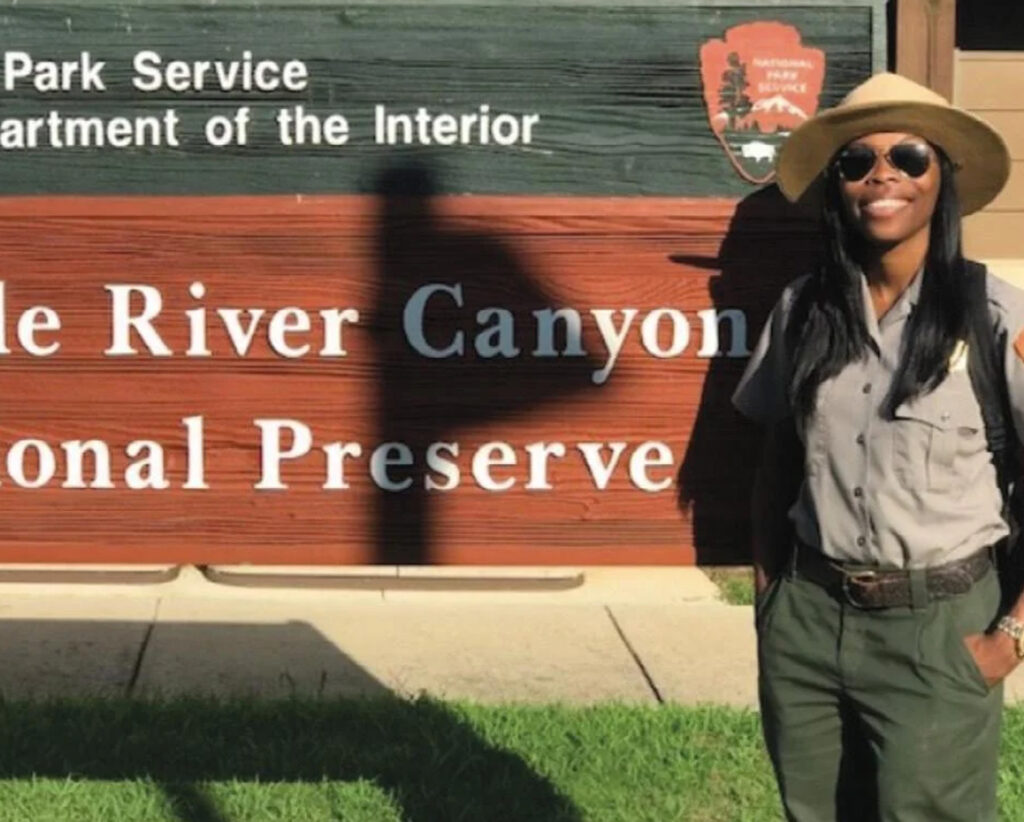
The man proceeded to accuse her of being an imposter. Hicks started recording the incident on her phone. He told her that she didn’t belong there; that she couldn’t afford to live there. She was stunned.
“In the recording you can hear me laughing because I was just so shocked,” she said.
The man threatened to call the cops. Hicks insisted that she lived there, that she wasn’t trespassing. He asked what house she lived in. Fearing for her safety, she refused to tell him. The man said he didn’t care about her safety.
An officer arrived. Hicks texted a friend who was a law enforcement park ranger, who offered to come help diffuse the situation. But the cop harassed her and asked her where she lived. Again, Hicks refused to answer in front of the other driver. Eventually her coworker came and verified that Hicks was a federal employee at the park. The officer finally let her go. For Hicks, it was a life-changing moment.
She says her supervisor was supportive but had never experienced anything like this. He offered to get her another gun, which they did. A coworker had a more unusual solution. He suggested she get a Confederate flag for her house (all her neighbors flew one) so folks wouldn’t know where she lived. As unbelievable as it may seem, they went to the Dixie store and bought a Confederate flag.
“At that point, I realized I had to blend in until I could get out of there,” she said.
Hicks hadn’t been considering graduate school, but the experience made her want to know more about other people of color’s experiences in parks. “I knew I wasn’t the only minority who had gone through something like that,” said Hicks. “What happened is probably unique to me, but those (types of) situations are not unique.”
“Connecticut is a beautiful state with many opportunities for recreation, but certain communities aren’t aware of everything we have to offer in state parks.”
Dr. Akiebia Hicks
Hicks applied to graduate programs. President Carter wrote her a letter of recommendation, which still hangs on her wall.
As a doctoral student at Clemson University, Hicks studied the experiences of Black employees in the National Park Service, probing the question of how to empower people of color employees once they’ve been hired.
“There’s so much talk about how we need to ‘increase diversity,’” said Hicks, “but that messaging is so harmful to the employee. I can go to any place, and I may be the most qualified person there, but there’s going to be somebody who doesn’t think that I belong. I can be a park ranger in full uniform standing next to a white intern and a visitor is going to go right up to that intern with a question.”
Mentorships can be helpful and having a supportive community is critical, Hicks says. “One of my goals with my research is to be not only empowering employees who work in those places, but also providing management tools,” said Hicks.
Diversity initiatives won’t work, she says, unless the people of color who are already employed are empowered and happy. Otherwise, it becomes a revolving door: an organization hires a person of color; they don’t feel supported and end up leaving; the organization hires more people.
“I like to think about sustaining diversity and recruiting diverse talent. I don’t like just ‘increasing diversity.’ I don’t think it comes from a genuine place. I don’t think it’s effective, and it does nothing to address the problem. We shouldn’t focus on increasing diversity until we have the tools to sustain diversity.
“Nature looks different for everyone,” she said, “and nature was used as a form of oppression in the past. As long as it’s ‘Leave No Trace,’ we have to stop the gatekeeping and telling people how to recreate in the Eurocentric way because recreation looks different for everybody.”
Hicks is trying to spread a counter-narrative to the notion that people of color don’t like the outdoors. “Black and brown bodies have been in nature,” she said. “We are in nature, despite all these obstacles that have been set up to prevent us from being in these spaces.” Still, she’s haunted by her experience at Little River Canyon.
“I’ll never be used to racism. I’ve seen it a lot, but that experience was still shocking to me,” she said. “Every time it happens, it makes me reflect on how harmful respectability politics are. I’m doing what I’m supposed to be doing, I’m not bothering anybody, but it doesn’t matter. How educated you are; it doesn’t matter. Badge, uniform. It doesn’t matter what you have, or what you’ve accomplished, people don’t care about that. You’re still just a Black or brown body. No one’s immune to racism.”
Timothy Brown is the editor of Connecticut Woodlands.

